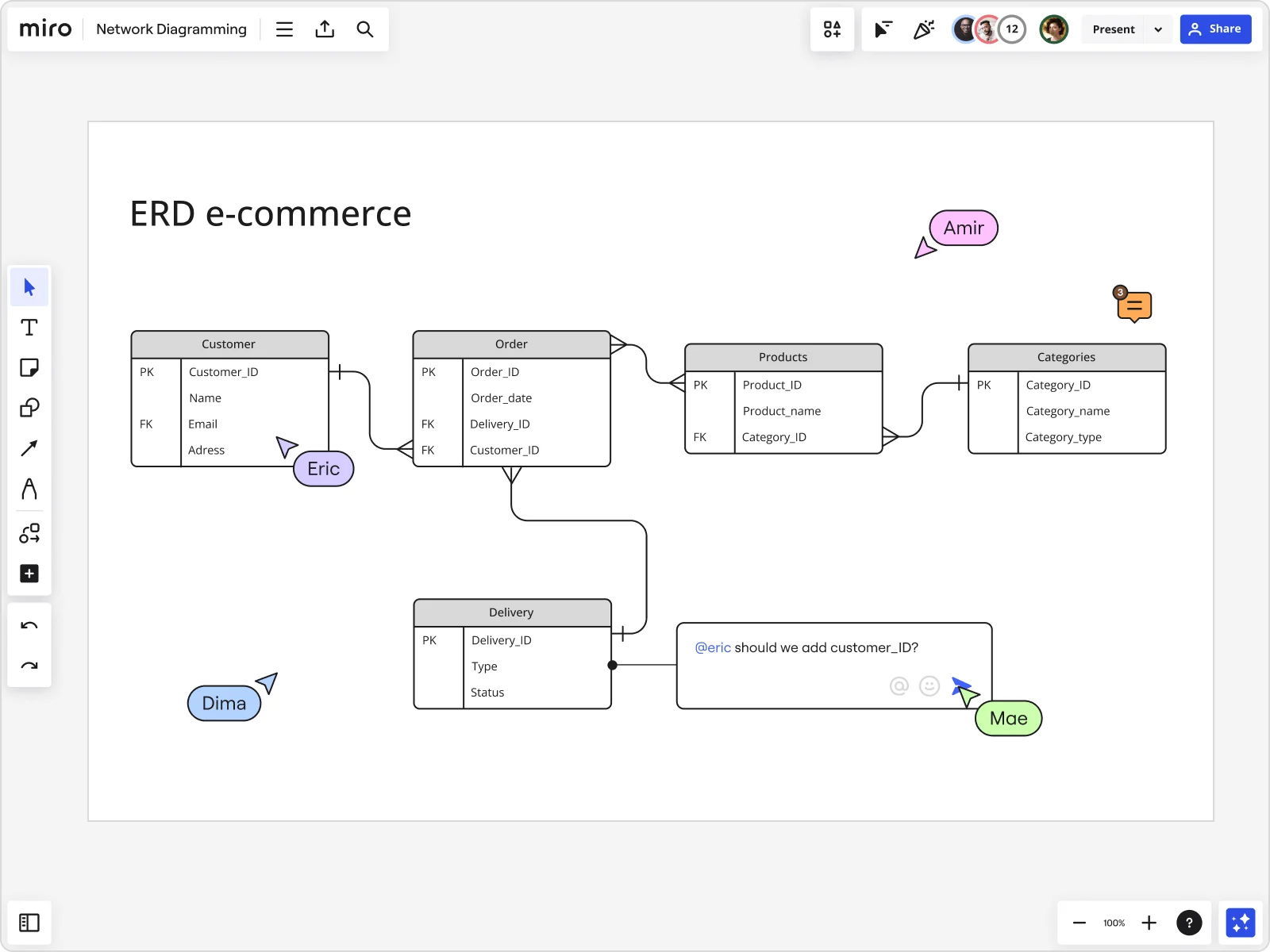
Table of contents
Table of contents
What is a weak entity in ER diagrams?

Weak entities in ER diagrams: All you need to know
In entity-relationship (ER) diagrams, a weak entity is an entity that cannot be uniquely identified by its own attributes alone; it depends on the existence of another entity, called the "owner" or "parent" entity.
Understanding weak entities and how they are construed in ER diagrams is fundamental for constructing robust and interconnected database systems.
In this guide, we will define weak entities, exploring their characteristics, methods of identification, and how they are represented in ER diagrams.
What is a weak entity in ER diagrams?
A weak entity is an entity that lacks a primary key of its own. Instead, it relies on a combination of its attributes and the primary key of its related strong entity to form a composite key.
Here's an example to illustrate the concept:
Consider an entity-relationship model for a university database. You might have a "Course" entity and a "Section" entity. The "Section" entity might be a weak entity because it cannot be uniquely identified by its own attributes alone; it depends on the combination of the course identifier and the section number. The course identifier and section number together form a composite primary key for the "Section" entity, and they are also attributes of the owning "Course" entity.
In this example, the "Course" entity is the owner, and the "Section" entity is the weak entity. The identifying relationship between them is represented in the ER diagram, indicating that the section is identified by its relationship with a specific course.
Characteristics of weak entities
Weak entities are common in scenarios where an entity's existence depends on another entity, and they are crucial for accurately modeling complex relationships in a database schema.
There are two essential features that characterize weak entities:
1. No autonomous existence
Unlike strong entities, weak entities cannot exist independently; they are subordinate to the existence of their associated strong entity.
2. Composite key dependence
To uniquely identify a weak entity, its composite key is formed by combining its attributes and the primary key of the identifying owner entity. This ensures that each weak entity instance has a distinct identity within the context of its owner entity.
Key differences between weak and strong entities
The main difference between weak and strong entities in an ER diagram lies in their ability to be uniquely identified. This is done by looking at the following attributes:
Primary key possession
Strong entities have their own primary keys, which uniquely identify each entity instance. In contrast, weak entities derive their identity from their relationship with the identifying owner entity.
Independence vs. dependency
While strong entities can stand alone and maintain their integrity, weak entities rely on the presence of their associated strong entity to ensure their existence and integrity.
Example of a strong vs. weak entity
Here's another example to illustrate the differences between strong and weak entities and how they can be identified:
Consider entities representing "Person" (a strong entity) and "Address" (a weak entity).
Each person can be uniquely identified by their Social Security Number (SSN), making "Person" a strong entity. On the other hand, an address alone may not be unique, but when combined with the person it belongs to, it becomes unique.
The combination of Person's SSN and Address's Street is used as a composite primary key for the "Address" entity, making it a weak entity.
Representing weak entities in ER diagrams
In an ER diagram, a weak entity is visually represented using a double-bordered rectangle. The name of the weak entity is written inside the rectangle, clearly distinguishing it from strong entities.
Another common notation for representing weak entities involves using dashed lines to connect the weak entity to its identifying owner entity. This emphasizes the dependency of the weak entity on the strong entity for its existence.
Miro's database design tools can help you collaborate with your team and visualize these.
Best practices for working with weak entities
Weak entities are crucial for accurately modeling complex relationships in a database schema. Because of their complexity, it's important to follow a few best practices to ensure your diagram isn't overly convoluted or poorly constructed:
1. Identify and label weak entities
Properly identifying weak entities is crucial for accurate database design. Analyze the relationships between entities carefully, considering the one-to-many relationship and total participation constraints.
2. Limit complexity and overuse
Use weak entities judiciously and only when they are necessary. Overuse of weak entities can lead to unnecessary complexity in the ER diagram, hindering understanding and maintainability.
Conclusion on weak entities in ER diagrams
Understanding weak entities in ER diagrams is important for creating well-structured and efficient database systems. Using them effectively enhances data organization, fosters data integrity, and allows for a comprehensive representation of complex relationships.
When designing ER diagrams, carefully consider the role of weak entities to optimize your data modeling process effectively. By doing so, you empower your database design with an accurate and reliable representation of real-world scenarios and relationships, ultimately leading to more effective data management and system implementation.
Throughout the process of creating and updating ER diagrams, Miro's ER diagram tool simplifies the entire workflow.